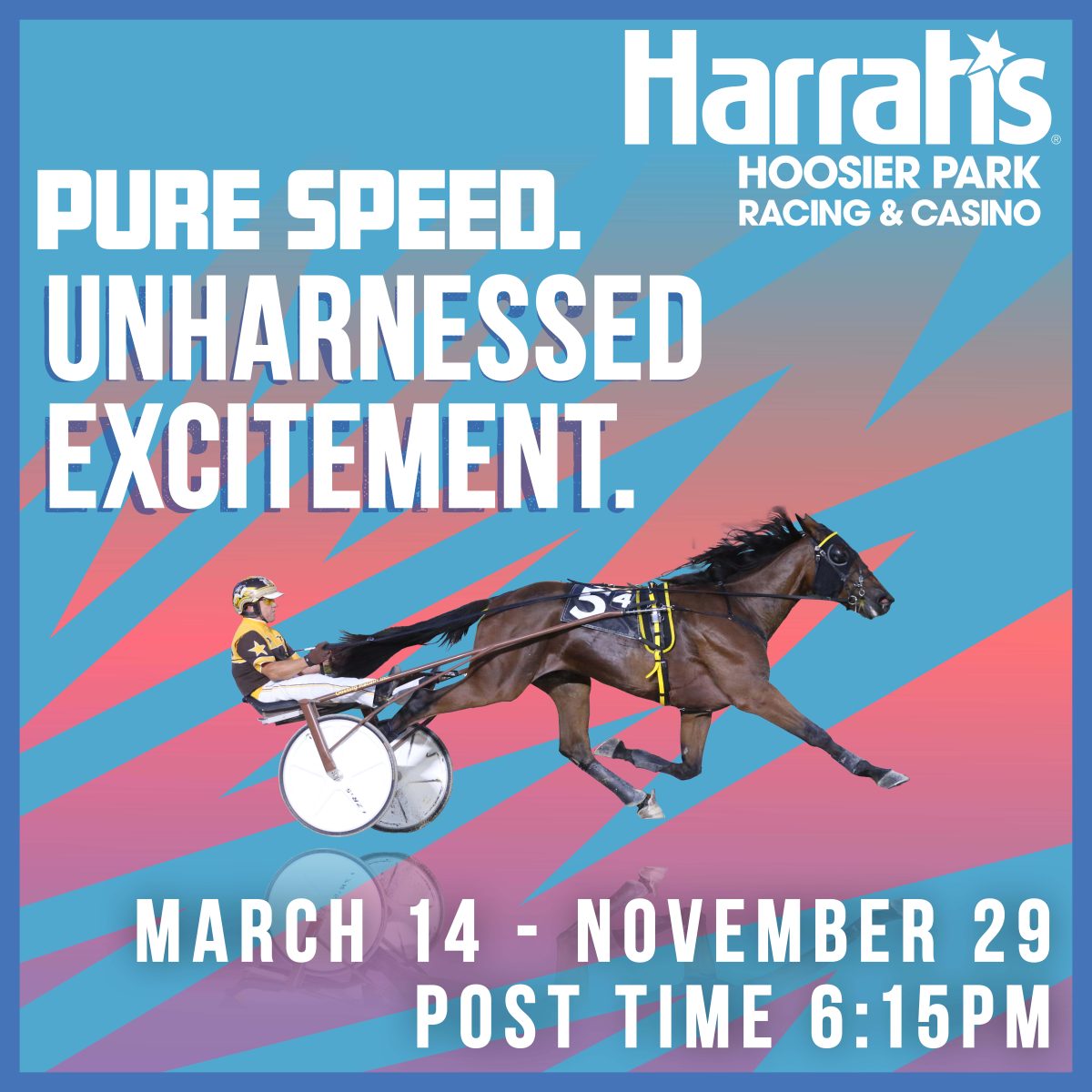Bill McLinchey on the importance of Woodbine Mohawk Park’s 12 Grade 1 stakes
by Melissa Keith
On Jan. 6, the U.S. Trotting Association announced the introduction of graded stakes for North American harness racing. Two Canadians — Woodbine Entertainment senior manager of communications Mark McKelvie and Standardbred Canada president/chief executive officer Darryl Kaplan — took part in meetings of the 11-member Graded Stakes committee, which was originally formed in 2023. They are serving three-year terms that expire in 2027.
While Mohawk is not the only Canadian racetrack to have signature stakes with graded rankings, it leads North America by the number of Grade 1 races this year, with a total of 12. The 2025 Breeders Crown also takes place at the Campbellville, ON showplace on Oct. 24-25, bringing the number of Grade 1 stakes at Mohawk to 24 this season.
The dozen Grade 1 Mohawk stakes are the Metro (2-year-old open pacers), Shes A Great Lady (2-year-old filly pacers), Mohawk Million and William Wellwood Memorial (2-year-old open trotters), Peaceful Way (2-year-old filly trotters), North America Cup (3-year-old open pacers), Fan Hanover (3-year-old filly pacers), Canadian Trotting Classic (3-year-old open trotters), Elegantimage (3-year-old filly trotters), Canadian Pacing Derby (open pace), Roses Are Red (filly and mare pace), and the open Maple Leaf Trot.
There are three Grade 2 stakes at Mohawk this season: the Goodtimes (3-year-old open trot), Milton (filly and mare pacers), and Armbro Flight (filly and mare trotters).
Aside from the Breeders Crown, Mohawk will play host to 28 graded stakes in total this year, including the following Grade 3 events: the Nassagaweya (2-year-old male pacers); Champlain divisions for 2-year-old male and female pacers and trotters; Eternal Camnation (2-year-old filly pacers); Somebeachsomewhere (3-year-old open pace); Casual Breeze (3-year-old filly trotters); Simcoe divisions for 3-year-old male and female trotters and pacers; and the Mohawk Gold Cup open pace.
Woodbine’s vice-president of standardbred racing Bill McLinchey recently weighed in on the grading of harness stakes, which he called “a nice surprise.” He said that the new system held promise because it formalized the relative value of major races.
“I don’t know if it comes from us being maybe just a smaller industry [than North American thoroughbred racing], but we all knew the stakes and we assumed everyone else, whether you were buying or racing horses or running a racetrack, all knew which stakes held importance,” McLinchey said. “I had given it some thought, why we hadn’t [graded stakes before], and I would say that we probably just assumed that everybody just knew which ones were considered at the top.”
McLinchey added that graded standardbred stakes would be more readily understood by thoroughbred owners, bettors, fans, and media already familiar with the concept.
“I know I can speak from Woodbine, a company where we are dual-breed, and our people on the thoroughbred side, when they saw the list come out with the number of Grade 1s we had, they said, ‘That’s pretty amazing that you’ve got that,’” McLinchey said. “They knew the names of our [Mohawk] stakes, but they maybe didn’t know quite the importance that those stakes had in the industry.”
Communicating the prestige of winning certain races matters more than ever, with formally-assigned grades removing ambiguity. Races restricted to horses sired or foaled in certain states or provinces can become “restricted graded races” according to the new rules, based on purse and other criteria, but not full-fledged graded stakes.
“I think that it probably just helps define it better for people, as we’re attracting new owners,” McLinchey said. “The money in our industry for purses is different now than it’s ever been, where some regional sires stakes are going for the same amount of money Grand Circuit races are, and we’re seeing horses opt for a sires stakes race instead of a Grand Circuit race.”
The Canadian dollar is being taken at par with the American dollar for the purpose of deciding stakes status.
“I think that it is important that they did that, because there is a level of prestige that comes with our races,” McLinchey said.
The Mohawk stakes that earned Grade 2 or 3 status were logical choices, in his view.
“I think I understand where they came from for the grading of those races,” McLinchey told HRU. “Participants look at a race like the Nassagaweya or the Eternal Camnation as prep races for the bigger races that are down the line, those being the Metro and the Shes A Great Lady. While those races are stake races and they carry a really nice purse, they’re still prep races for the bigger pot later in the season.”
Woodbine’s VP of standardbred racing said he thought the committee “hit it pretty close” in the inaugural year of the new North American grading system.
“I’m sure some people would look and say that there could be some adjustments made, or ‘Why isn’t this race Grade 2 when it should be?’, but for the most part, I agree with what they came up with and there’s always going to be debate, no matter which races you look at,” he said.
“The good thing is, they’re open to change, and they defined their process. I was able to attend the race secretaries meeting with Mark Loewe, and he presented it to us. He laid out the processthat they had, and I respected their process and was overall pretty satisfied with how Mohawk got graded.”
Calling the graded status of races “a promotional tool,” McLinchey said he welcomed the dozen Grade 1 Breeders Crown finals returning to Mohawk later this year. He said preliminary internal meetings about marketing the 2025 divisional championships had already discussed “getting it out there that this is now a Grade 1.”
The 2025 Mohawk Million (Grade 1) has already attracted significant interest from owners of 2-year-old trotters.
“People started reaching out pretty well immediately after the release went out,” McLinchey said.
He added that this year, a limit of three slots can be acquired per owner.
“I’m assuming we’ll have more than 10 people put their names forward to purchase a slot,” he said. “Each person will only be allowed one slot at that time. With the same price point as last year, we’re fairly confident that we’re going to have to have a draw for the 10 slots.”
The nomination fee ($25,000 CDN) is due Feb. 18, with the $25,000 sustaining payment due June 2.
“Really, what we’ve tried to do with Mohawk’s 2-year-old stakes is make Mohawk the destination to race your 2-year-olds,” said McLinchey, in reference to the Mohawk Million as well as the Hambletonian Society’s ungraded Tompkins-Geers Stakes, which moved there last year.
“People start with the Tomkins-Geers [June 26 and 27], which had been struggling to fill at some of the tracks that they’ve been going to in the States. In conversation with [Hambletonian Society president/CEO] John Campbell, he asked us if it was something we would consider giving a try at Mohawk, and we were interested. We thought, ‘Why not try to give the 2-year-olds a stakes race early in the year, right after they qualify?’
“The funny thing was, Bob McIntosh won it last year, and we were lucky enough that Bob was at the races that night. It was great to see him win it. Doug McIntosh was there also, and both commented that they raced in these races all over North America at different tracks, and it’s great that it’s finally at Mohawk.”
Bob McIntosh died on July 28, 2024, after winning the June 27 Tomkins-Geers for 2-year-old trotting fillies with his trainee Incantation. It was his final stakes victory.

















